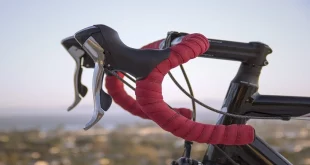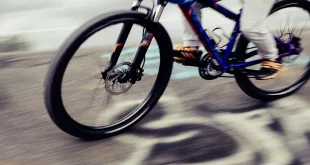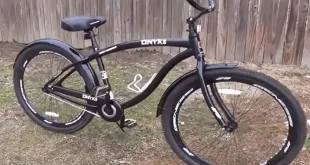No, not all bmx bikes have gears. Some bmx bikes are designed with a single speed, known as “single speed bmx bikes,” while others may have multiple gears for added versatility and adaptability to different terrains.
From racing tracks to street riding and freestyle tricks, bmx bikes have become a popular choice for riders of all skill levels. Whether you’re new to the sport or a seasoned professional, finding the right bmx bike to suit your needs is crucial.
One key consideration is whether you prefer a bike with gears or without gears. Gearing systems provide the ability to shift between different gear ratios, allowing for easier pedaling and faster speeds on long stretches of road or challenging uphill climbs. On the other hand, single speed bmx bikes offer simplicity, durability, and low maintenance, making them a favorite among riders who prefer a more straightforward riding experience. In this article, we will explore whether all bmx bikes have gears and examine the benefits of both geared and single speed options.
Understanding Bmx Bikes
Bmx bikes have long been a popular choice for riders of all ages and skill levels. These bikes are known for their durability, maneuverability, and ability to perform tricks and stunts. One question that often comes up when discussing bmx bikes is whether or not they have gears.
In this section, we will delve into the characteristics and features of bmx bikes, the different types available, and their purpose and usage.
Characteristics And Features Of Bmx Bikes:
- Bmx bikes are built with strong and lightweight materials such as chromoly steel or aluminum, making them suitable for the demands of extreme sports.
- They have a compact frame design, typically with a top tube that is shorter than that of a traditional bicycle, allowing for greater maneuverability.
- The handlebars on a bmx bike are typically wider and taller, providing riders with more control and leverage during tricks and jumps.
- Unlike many other types of bikes, bmx bikes do not come equipped with gears. Instead, they have a single gear or what is known as a “single speed” drivetrain.
- Bmx bikes often feature smaller wheels and tires, typically ranging from 20 to 24 inches in diameter. These smaller sizes contribute to the bike’s agility and responsiveness.
Different Types Of Bmx Bikes (Freestyle, Racing, Dirt-Jump):
- Freestyle bmx bikes are designed for performing stunts, tricks, and jumps in skate parks, street riding, or on flat surfaces. These bikes have a sturdy frame, strong brakes, and often come with pegs for grinding on rails or ledges.
- Racing bmx bikes are built for high-speed riding on dirt or paved tracks. They have lightweight frames, narrow tires, and a larger front sprocket to facilitate faster pedaling.
- Dirt-jump bmx bikes are specifically designed for jumping and aerial maneuvers. They feature reinforced frames, knobby tires for traction, and a strong rear brake for precise control during landing.
Purpose And Usage Of Bmx Bikes:
- Bmx bikes are primarily used for various forms of extreme biking such as dirt jumping, freestyle riding, and bmx racing.
- They provide riders with a platform to push their boundaries, develop their skills, and showcase their creativity in a controlled and structured environment.
- Bmx bikes are favored by riders of all ages, from young children learning the basics to seasoned professionals competing in national and international events.
- Beyond the competitive realm, bmx bikes are also a popular choice for casual riding, urban commuting, and as a means of exercise and outdoor recreation.
By understanding the characteristics and features of bmx bikes, the different types available, and their purpose and usage, riders can make an informed decision when choosing the right bmx bike for themselves. Whether it be for performing tricks, racing, or exploring new terrains, bmx bikes provide an exhilarating experience for riders of all levels.
The Gear System In Bmx Bikes
Bmx bikes are known for their agility and sturdiness, making them a favorite among riders who enjoy performing tricks and jumps. When it comes to the gear system in bmx bikes, there are a few important things to know. In this section, we will explore the function and importance of gears in bicycles, as well as provide an overview of gear systems.
Finally, we will answer the question: do bmx bikes typically have gears? Let’s dive in and find out!
Function And Importance Of Gears In Bicycles:
- Gears play a crucial role in a bike’s performance, allowing riders to change the resistance they encounter while pedaling.
- They provide a range of options for different terrains and riding conditions.
- By shifting into lower gears, riders can easily tackle steep inclines, while higher gears allow for faster speeds on flat surfaces.
- Gears help riders maintain an optimum cadence, ensuring efficient energy transfer and reducing fatigue.
Overview Of Gear Systems:
- Bicycles use various gear systems, but the most common type is the derailleur system.
- A derailleur system consists of a chain, multiple chainrings attached to the crankset, and a cassette with different-sized cogs at the rear wheel.By shifting gears, riders can move the chain between different chainrings
- and cogs, altering the gear ratio.Other gear systems, such as hub gears or single-speed setups, are less common
- in bmx bikes but may be used for specific purposes or preferences.
Do Bmx Bikes Typically Have Gears?
- Unlike road bikes or mountain bikes, bmx bikes typically do not come equipped with gears.
- Most bmx bikes are designed with a single-speed gear ratio, often referred to as a “ratio of one.”
- This simplicity allows riders to focus on their skills, as they do not need to worry about gear shifting during jumps, tricks, or races.
- However, some bmx riders may choose to add gears to their bikes for certain disciplines or riding styles.
- Gearing options can vary depending on the rider’s preferences and the specific demands of their riding style.
Now that you have a better understanding of the gear system in bmx bikes and whether they typically have gears, you can make an informed decision when choosing a bmx bike that suits your needs and riding style. Whether you prefer the simplicity of a single-speed setup or the versatility of multiple gears, there is a bmx bike out there for you.
Gearless Bmx Bikes
Gearless bmx bikes are gaining popularity among riders who prefer a simpler riding experience. While many bmx bikes come equipped with gears for added speed and versatility, gearless bmx bikes offer a unique riding experience that is focused on simplicity and control.
In this section, we will explore the features and benefits of gearless bmx bikes, as well as their best applications.
Explanation Of Gearless Bmx Bikes
Gearless bmx bikes, as the name suggests, do not have gears or a derailleur system. Instead, they are designed with a single gear ratio, usually around 25/9, which means the front chainring has 25 teeth and the rear cog has 9 teeth.
This gear ratio offers a good balance between acceleration and top speed, making it ideal for freestyle riding and tricks.
Advantages And Disadvantages Of Gearless Bmx Bikes
Gearless bmx bikes offer several advantages over their geared counterparts. Here are some key points to consider:
- Simplicity: The absence of gears means less maintenance and fewer parts to worry about. This makes gearless bmx bikes more durable and easier to maintain.
- Lightweight: With fewer components, gearless bmx bikes tend to be lighter, which can enhance maneuverability and make tricks easier to perform.
- Direct power transfer: The single gear ratio allows for direct power transfer from the pedals to the rear wheel, resulting in a more responsive and efficient ride.
However, gearless bmx bikes also have some limitations:
- Limited speed range: Without a range of gears, gearless bmx bikes may not reach high speeds compared to bikes with multiple gears.
- Challenging hill climbing: The single gear ratio can make climbing steep hills more difficult, especially for riders who are used to a wider range of gears.
Best Applications For Gearless Bmx Bikes
Gearless bmx bikes are well-suited for certain riding styles and applications. Here are some scenarios where gearless bmx bikes shine:
- Skatepark riding: The simplicity and maneuverability of gearless bmx bikes make them ideal for skatepark riding, where quick acceleration and precise control are essential.
- Street riding: Gearless bmx bikes are also popular among street riders who focus on technical tricks and urban riding. The direct power transfer and lightweight design allow riders to navigate obstacles and perform tricks with ease.
- Freestyle riding: Whether it’s flatland tricks, ramps, or dirt jumps, gearless bmx bikes offer a versatile platform for freestyle riding. The single gear ratio allows riders to maintain consistent speeds and execute tricks with precision.
Gearless bmx bikes offer simplicity, durability, and direct power transfer for riders who value control and maneuverability. While they may not be suitable for all riding situations, gearless bmx bikes excel in skatepark, street, and freestyle riding scenarios. Whether you’re an experienced rider looking for a new challenge or a beginner exploring the world of bmx, a gearless bike can offer a unique riding experience that is both fun and engaging.
So, gear up and get ready to embrace the simplicity of gearless bmx riding.
Geared Bmx Bikes
Bmx bikes are known for their agility and speed, making them a popular choice among thrill-seeking riders. While many people associate bmx bikes with single-speed setups, the truth is that not all bmx bikes are the same. In fact, some bmx bikes are equipped with gears, offering riders additional options when it comes to tackling various terrains and obstacles.
Geared bmx bikes are designed with specific advantages and disadvantages, and they excel in certain situations. In this section, we will explore the world of geared bmx bikes, discussing their features, benefits, drawbacks, and ideal scenarios. So, let’s dive in and uncover everything you need to know about geared bmx bikes.
Explanation Of Geared Bmx Bikes:
- Geared bmx bikes, as the name suggests, come with a system of gears that allow riders to switch between different gear ratios.
- These gears, typically located on the rear hub, enable riders to select the appropriate gear based on their speed, terrain, and personal preference.
- Geared bmx bikes usually have a freewheel or cassette setup, making it possible for riders to coast without pedaling.
- The number of gears can vary, with some bmx bikes featuring a single gear in the rear, while others have multiple gears for more versatility.
Advantages And Disadvantages Of Geared Bmx Bikes:
Advantages:
- Increased speed: With the ability to switch gears, riders can optimize their speed on different surfaces, whether it’s accelerating quickly on a straight path or pedaling efficiently uphill.
- Versatility: Geared bmx bikes offer riders the freedom to adapt to different terrains and riding styles. Whether you prefer racing on the track, conquering dirt jumps, or cruising around the streets, having gears allows for more versatility.
- Improved climbing ability: Gearing down on climbs allows riders to exert less energy while ascending steep inclines.
Disadvantages:
- Added weight: Adding gears to a bmx bike increases its overall weight, which can impact maneuverability and stunts that require quick accelerations or aerial maneuvers.
- Maintenance: Gears require more maintenance compared to single-speed bmx bikes. Components like derailleurs and shifters need regular adjustments and occasional replacements.
Optimal Situations For Geared Bmx Bikes:
- Long-distance rides: Geared bmx bikes are ideal for longer rides where sustained effort and changing terrain necessitate gear adjustments for efficiency.
- Commuting: If you plan to use your bmx bike for urban commuting or running errands, having gears allows you to maintain a desired pace regardless of stoplights or steep hills.
- Riding in hilly areas: Geared bmx bikes offer an advantage when navigating hilly or mountainous regions, as riders can adjust the gear ratio to climb with less strain on their legs.
By incorporating gears into the nimble design of bmx bikes, manufacturers have created a new breed of machines that are more versatile and adaptable to various riding conditions. Whether you prefer the simplicity of a single-speed bmx bike or the flexibility of a geared one, both have their own merits.
The choice ultimately comes down to your personal preferences and the type of riding you enjoy.
The Debate: Gears Vs. Gearless Bmx Bikes
Ah, the age-old debate in the world of bmx bikes – gears or no gears? While some riders swear by the advantages gears offer, others prefer the simplicity and maneuverability of a gearless bike. If you’re someone who’s torn between the two options, fret not! We’re here to break down the pros and cons of each type of bmx bike, as well as the factors you should consider when choosing between them.
So, let’s dive in and explore the wonderful world of gears and gearless bmx bikes!
Pros And Cons Of Each Type Of Bmx Bike:
Geared Bmx Bikes:
- Gears provide a wider range of gearing options, allowing riders to tackle different terrains and varying levels of difficulty.
- Riders can achieve higher speeds and maintain a consistent pace with the help of gears, especially when riding on long stretches or uphill sections.
- Gears offer better power transfer, enabling riders to put in less effort while pedaling and conserve energy for tricks and jumps.
- However, geared bmx bikes tend to be slightly heavier due to the added components, which might affect maneuverability and trick execution.
- Gear systems require regular maintenance, including lubrication and occasional adjustments, to keep them functioning smoothly.
- The cost of geared bmx bikes is generally higher due to the additional components involved.
Gearless Bmx Bikes:
- Gearless bikes are known for their lightweight design, allowing for greater agility and maneuverability. They are perfect for riders who prioritize quick and precise movements.
- Without gears, riders can fully focus on perfecting their skills and executing tricks, as there is no need to worry about gear shifting or adjusting.
- Gearless bikes are generally more affordable, making them a popular choice for budget-conscious riders or beginners who are just starting to explore the world of bmx.
- However, the lack of gears means gearless bikes have a more limited range of speeds, making it challenging to tackle steep inclines or maintain high speeds on flat stretches.
- Riders may need to put in more effort when pedaling, especially when riding over longer distances or facing headwinds.
Factors To Consider When Choosing Between Geared And Gearless Bmx Bikes:
- Your riding style and preferences: Consider the type of terrain you’ll be riding on and the specific tricks and stunts you aim to perform. Gears might be more beneficial for riders seeking versatility and speed, while gearless bikes could be ideal for those looking for maneuverability and quick movements.
- Skill level: Beginners might find gearless bikes easier to handle and less overwhelming, while more experienced riders might appreciate the options and advantages gears offer.
- Budget: Take into account your budget and the overall cost of the bike, including maintenance and potential upgrades or repairs associated with gears.
- Weight: Consider the weight of the bike and how it may affect your ability to execute tricks and maneuvers.
In the end, the choice between gears or gearless in a bmx bike ultimately comes down to personal preference, riding style, and the type of terrain you plan to conquer. So, put some thought into your options, test out different bikes if possible, and choose the one that best suits your needs and allows you to truly push your limits in the exciting world of bmx riding.
Factors Affecting Gear Usage In Bmx Bikes
Do all bmx bikes have gears? It’s a common question among bmx enthusiasts, and the answer is not as straightforward as you might think. While traditional bmx bikes are known for their single-speed setup, modern bmx bikes come in a variety of options, including those with gears.
The decision to use gears or not depends on several factors that we’ll explore in this section, including the age and skill level of the rider, the terrain and riding style, and the specific purpose and goals for using a bmx bike.
Let’s delve into these factors and uncover the role they play in gear usage in bmx bikes.
Age And Skill Level Of The Rider:
- Younger and less experienced riders often start with single-speed bmx bikes as they provide simplicity and ease of use.
- As riders gain more experience and skill, they may opt for bmx bikes with gears to explore different riding techniques and overcome challenges on various terrains.
- Older riders who participate in competitive events or more advanced riding disciplines might prefer gears for increased speed and control.
- Ultimately, the age and skill level of the rider will determine whether gears are necessary or beneficial for their specific biking needs.
Terrain And Riding Style:
- Flatland riders who perform intricate tricks and maneuvers in small spaces usually prefer single-speed bmx bikes as they require precise control and balance.
- Riders who tackle off-road trails or skate parks with ramps and jumps may opt for bmx bikes with gears to adjust their speed and power delivery when climbing or descending steep inclines.
- Riders who enjoy a mix of urban riding, street tricks, and dirt jumps might choose a bmx bike with gears to handle different terrains and riding styles.
Specific Purpose And Goals For Using A Bmx Bike:
- Riders who solely use their bmx bikes for commuting or leisurely rides in urban environments may not have a need for gears, as they typically require less speed and maneuverability.
- Riders looking to push their boundaries in bmx racing or freestyle competitions may prefer the versatility of gears to improve acceleration and adjust their speed based on track conditions.
- Riders with specific performance goals, such as achieving higher speeds or maintaining cadence during long-distance rides, might opt for gears to optimize their riding experience.
While not all bmx bikes come with gears, there are various factors that can influence the choice to use gears in a bmx bike. The age and skill level of the rider, the terrain and riding style, as well as the specific purpose and goals for using a bmx bike, all play significant roles in gear usage.
Whether riders prefer the simplicity of a single-speed setup or the versatility and control of gears, the key is to choose a bmx bike that best suits their individual needs and riding preferences.
Conclusion
So, do all bmx bikes have gears? The answer is no. While some bmx bikes do have gears, many are designed with a single gear. This single gear setup offers simplicity and ease of maintenance, making it popular among riders.
With a single gear, it’s easier to focus on mastering tricks and jumps without the distraction of shifting gears. However, if you’re someone who enjoys riding on varied terrains or longer distances, a bmx bike with gears may be more suitable for you.
Gears allow for different speed options, making it easier to navigate different types of terrain. Ultimately, the choice between a bmx bike with gears or without gears depends on your riding style and preferences. So, whether you prefer the simplicity of a single gear or the versatility of multiple gears, the important thing is to enjoy your bmx riding experience to the fullest.
 CommutingLife Explore The World On Two Wheels
CommutingLife Explore The World On Two Wheels





